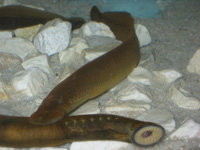Computer Modeling of Swimming Fish Could Lead To New Robots and Prosthetics
COLLEGE PARK, Md — Scientists at the University of Maryland and Tulane University have developed a computational model of a swimming fish that is the first to address the interaction of both internal and external forces on locomotion. The interdisciplinary research team simulated how the fish’s flexible body bends, depending on both the forces from the fluid moving around it as well as the muscles inside. Understanding these interactions, even in fish, will help design medical prosthetics for humans that work with the body’s natural mechanics, rather than against them. This research is published in the October 18, 2010 online early edition of the Proceedings of the National Academy of Sciences. (more…)

